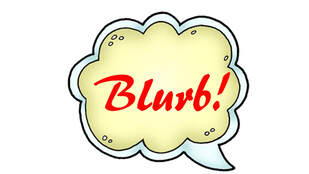 In writers’ groups on social media, authors often post drafts of their blurbs, asking for opinions. It’s a good idea, because it can gain valuable feedback. But in reading these drafts, it is quite obvious that some authors haven’t read any of the numerous blogs that have been written on the subject of blurb writing. In the vast majority of cases, the blurbs won’t sell the book because they fail to capture the interest of the reader within the first few words. Instead, they try to precis the story and what they end up with doesn’t sound interesting enough to sell the book. But experts on blurb writing often say they can write a blurb that will sell a book without even reading the book. And this is a theory we subscribe to, in broad terms, because in the blurb you aren’t telling the story, you are telling the excitement of the story.  You aren't selling the story, you are selling excitement. You aren't selling the story, you are selling excitement. Let’s take visual media (movies, TV and games) and think about how they sell their product. They never try to tell the story. They try to show the viewer/player how much enjoyment they are going to get if they watch the movie or TV show or if they play the game. Depending on the genre, you will get car chases, explosions, gunfights, people falling out of aeroplanes, zombies trying to eat people, people expressing anger, fear or love. If it’s a comedy you will get jokes, either visual or spoken. What’s the most memorable scene in the movie Dumb and Dumber? Yes, that’s right, the one where Harry (Jeff Daniels) has his tongue frozen to the street sign. Yes, that’s in the trailer! By the time a good thirty second trailer is over, people are already setting reminders on their TV, booking seats at the cinema or they are downloading the game. The movie, TV show or game may be the worst ever, but you would never get that from the trailer. Because the trailer looks exciting/horrific/emotional/funny, and the audience wants to see more. The blurb is a book’s trailer, so it has to work the same way.  The reaction many book blurbs get. The reaction many book blurbs get. So many book blurbs just don’t sound entertaining enough. By the end of the first paragraph the reader has already lost interest and is scrolling onto the next book in the search results – somebody else’s book! We try to follow a three paragraph structure for blurbs. If you haven't sold the book by the end of the third paragraph, you probably aren't going to sell it at all. Research has shown, however, that many readers never get past the first paragraph. So that is the crucial one. If that hooks the reader, then the other two paragraphs clinch the sale.  We call this approach (very unoriginally) “hook, line and sinker.” Hook gets the readers’ attention, line reels them in and sinker makes the sale. (Note for the pedants: we know that is not what a sinker does, but we don’t care about that. We just want three simple words to remind us that the blurb comes in three parts. We don’t claim that our fishing metaphor is perfect.)  But the hook is crucial. It does 80% of the work in selling the book, because if it isn’t sharp enough, the reader’s attention will already be moving onto the next book in the search results. A good hook is made up of three parts (do you see a trend emerging here?): character – conflict – consequences. Who is the character, what conflict have they become embroiled in and what are the consequences of failure? But it also has to indicate the book’s genre without wasting words by making it explicit. If you write westerns, you might use the words gunslinger, drifter or cowboy. If you write medical romances, you might mention a doctor or a nurse. These indicate the genre without having to describe the genre. The hook can be written as three sentences, or as a single sentence. That isn’t so important. The important thing is that you have less than fifty words to get those things across in an exciting manner. Yes, 50! So, no room for lots of adjectives. No room for descriptions. No room for sub plots. No room for backstory and definitely no room for “world building”. 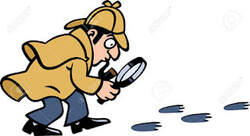 It has to be the tightest writing the author has ever done, because, if the reader’s mind starts to wander, they’ll never get them back. Here is an example: “When Private Eye Harry Jones was asked to investigate an errant husband, he had no idea it would nearly get him killed.” So, from that sentence we get genre (crime), we get the main character (Harry Jones) and we get the conflict and the consequences in the single word “killed”. To save you having to count, that was just 22 words. I didn’t need 50 and the reader will either be interested in finding out why a routine investigation nearly got Harry killed, or they won’t. I’m not trying to say that example is perfect, but it is the sort of thing blurb writers aim for as a first attempt. A 3 sentence example might be “A private investigator. An errant husband. A deadly assignment.” We still have the character, but without using his name. We still have the genre. We still have the conflict and the consequences. Some genres lend themselves to that approach better than others. I probably wouldn’t use the 3 sentence structure for a romance (though that doesn’t mean it can’t be used). 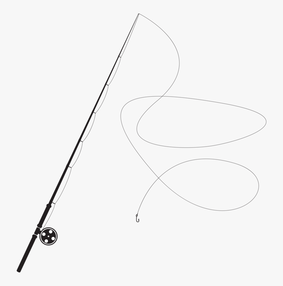 The second paragraph, which we call “line”, expands on the first to provide it with context. There are a few rules, mainly “don’ts”. 1. Don’t include other characters, focus on the protagonist (or MC if you prefer). 2. Don’t include sub-plots – stick to the main plot throughout. 3. Don’t get into world building, locations or time periods. If the book is set in a specific time period, use a generic term, eg Regency, medieval etc, or just refer to a century. 4. Don’t include backstory. It loses the focus of the blurb. 5. Do ramp up the conflict and the jeopardy. Continuing from our example hook, above, we might develop the line as follows: “When Harry Jones is asked to find out if a client’s husband is having an affair, it leads him into the seedy world of drugs and prostitution. He stumbles on the daughter of an old friend, enslaved to a drug gang. Desperate to help the girl, Harry takes on the gang's boss to set her free.” We can now clearly see the conflict that Harry has to deal with, without using a lot of unnecessary words. At the same time, we introduce a victim that needs help (the girl) and a villain (the gang's boss). 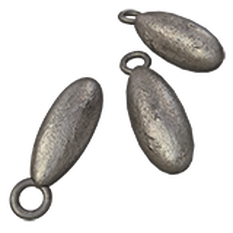 The sinker. The sinker. All that needs to happen now is for the levels of danger to be ramped up so high that the reader has no choice but to buy the book to find out what happens. That is the job of the “sinker” paragraph: “In order to rescue the trapped girl, Harry fights not only the drug gang, but also his own fears. Old memories return to haunt him, paralysing him with indecision. Can he overcome his past and get to the girl before she is killed, or must he watch his friend’s daughter die? Finishing on a question leaves the reader wanting to know the answer. And to find out the answer, they have to buy the book. Yes, it is manipulation, but all marketing is manipulation of some sort.  Different genres use different types of wording. Romance blurbs use phrases like “torn apart by fate” or “star-crossed lovers” or “mutual dislike”. But whatever wording is used, the blurb has to show that the possibility of an unhappy ending is real, so that the reader will want to know the final outcome. The final message we must give you is that the hero must always have control over their actions. They must never be coerced into involvement. So phrases such as “Harry must fight…” or “Harry has to overcome…” are a no-no because they make it look like Harry has no say in the matter. Instead, phrases such as “Harry fights …” or “Harry overcomes…” take out the element of coercion and leave Harry as a hero.  This is because heroes do the right thing because it is the right thing to do, not because they have been made to do it by some outside agency. This is a pretty safe rule when writing a novel anyway. The hero is the hero because they don’t walk away, even though they could. It's is a tough thing to do with some professions. Police, military, firefighters etc have to obey orders, so what we are talking about in a blurb has to be the character going above and beyond the call of duty. Yes it’s the cop’s job to catch the killer, but it isn’t their job to dangle from a ledge a hundred feet up while they do it.  Here’s a free offer for you. If you want to try out your ideas for your blurb, email it across to us at the address on our “contacts” page, we’d be happy to provide you with a bit of feedback, free of charge. Of course, if you’d like to browse our books catalogue while you’re waiting, we’d be delighted. You’ll find some stuff to read on our “free stuff” page. Pull up a seat, pour yourself a cup of coffee and we’ll get back to you as quickly as we can. If you have enjoyed this blog, or found it informative, then make sure you don’t miss future editions. Just click on the button below to sign up for our newsletter. We’ll even send you a free ebook for doing so.
0 Comments
Note: The names of companies are provided for information purposes only and are not recommendations. We warn you now, this is a very long blog, but it contains a huge amount of useful information.  Author Robert Cubitt at Newark Book Festival Author Robert Cubitt at Newark Book Festival One of our authors, Robert Cubitt, has attended several book fairs as a seller this year and learnt quite a few tricks about selling books direct to the public. This blog acts as a “case study” for anyone else who is considering taking this route to sell some of their books. I’m sorry that this blog only relates to UK events, but most of what we talk about can be applied in any country in the world, so it still makes it a worthwhile read. But first of all, a reality check. Book fairs and similar events aren’t going to turn you into a best selling author. All the exhibitors that Bob spoke to while attending these events had the same stories to tell regarding sales volumes.. You may sell a few books and people may search out your books on-line later, but don’t load up a van with hundreds of copies hoping to go home with an empty van because it isn’t going to happen.  But book fairs aren’t just about selling books direct to the public. They are a shop window. Not everyone who looks in a shop widow buys what they see straight away. Sometimes they go home, think about it for a bit and then come back and buy. Obviously, by that time the book fair is over, but there are ways of accommodating that which we will discuss later. Firstly, it is essential to do some research on the fairs you want to attend before you reserve your place. There is usually a contact email address to which you can address questions, but finding out who else has been to them in the past and what experiences they had is also helpful. Not all book fairs are the same. One of the ones Bob attended was aimed mainly at the second-hand book market and it’s pretty hard to sell your book at a profitable price when the stalls around you are selling all their stock at a fraction of what you are charging. It was noticeable from the behaviour of the people attending that they were interested only in bargains. The fair wasn’t an entirely wasted journey, but Bob barely covered his costs.  Some book fairs have speakers or people reading extracts of their work. You could even offer to speak yourself. It almost guarantees sales (but make sure to take someone with you to look after your stall while you are speaking. You don’t want to miss any sales). The next thing to consider is the cost for the “pitch”. Costs range from about £5 at smaller fairs up to £40 or £50 ($35-$45) at the larger ones. For one event, which ran over a weekend, Bob also had to have a hotel room which cost a further £100, plus meals. Including fuel, you can call it a £200 investment for the weekend and you won’t be far out. There were a few other costs, and a we’ll be discussing some of them.  Given what we said about the potential to make sales, it is therefore advisable to work out how many books you would have to sell to recoup your costs, to see if it is worthwhile going. Obviously, the closer you are to the venue, the more profitable it is likely to be. However, a lot of the value in bookfairs isn’t in actual sales. It is part of a marketing strategy and has to be treated with that in mind. You may not sell a single book on the day, but it could result in several sales after the event. It isn’t unusual to see people photographing the book covers and they aren’t doing that because they’re into photography. Bob actually asked someone why they were doing it. and they said it was because they were compiling a list of books they were interested in so they could compare and contrast them later, before buying on-line.  The next cost is that of the “author copies” of books, because you can’t sell product and promise to post it later! Of course, all of that expense is tax deductible, but has to be paid out in the first place in order to reclaim it later. So, was it worth that investment? Yes for 3 events, no for one (the one focused on secondhand books). Oxford was a particularly profitable one, with good reasons why. It is advertised as an “Indie” book fair, which means that customers know what to expect. Bob didn’t realise how many people actually search out Indie authors until he saw hundreds of them coming through the doors for that fair.  So, what did Bob learn from these events? The greatest thing about them was the opportunity to meet and interact with readers. These people are the life’s blood of authors, and we need to understand them. The best way to do that is to talk to them and book fairs provide an excellent opportunity to do that. While the main purpose of being at the book fair was to sell books, this opportunity to meet readers shouldn’t be underrated.  Booking a place at a book fair isn’t always easy. There isn’t a universal directory that lists them all (business opportunity?). Some book fairs leave it quite late to decide what dates to hold their events. It also isn’t easy to find out about the smaller fairs. The search results are dominated by the big, international events, which aren’t suitable for most Indie authors. Even if you could get a stall, the cost would be prohibitive. So, finding the smaller fairs is a bit of a challenge. We’ve provided some links to help you out, at the end of the blog. (sorry if you aren’t in the UK. You’ll have to do your own research).  The value of networking at bookfairs is important when it comes to finding out about other book fairs, but we’ll talk more about that later in the blog. Most (probably all) book fairs provide a table on which to set out your stall, but for outdoor fairs in the summer (and some at Christmas), you may need to check whether you need to provide your own shelter from the weather. Two were outdoor events and provided covered market stalls, which met Bob’s needs. But you should definitely plan to take something to sit on. Folding camping chairs or garden chairs are ideal. Once at the fair, there are many other things you have to consider, but they divide mainly into “selling your book” and “other things to think about”.  Social Media Turn your social media connections into customers by advertising your presence at the book fair through your social media posts. Bob posted the day before the event took place and again on the day of the event itself. By using the “schedule” facility that most social media channels have, the details can be posted even while you are driving to the event. If the event has a website, post a link to it. The organisers will appreciate it and it will help people to find out more information. Also link to the organisers’ social media accounts where appropriate. Bob also posts after the event to thank people for turning up.  Selling Your Book Make sure you have enough stock. There is no point in exciting interest in your work, only to have to tell the buyer that you’ve sold out. Exactly how many copies of a book you need will depend on the size of the book fair. If it’s big one, like Newark, then 50 books in total is probably enough. For a small event in a village hall, as few as 20 copies may be adequate. What you don’t sell at one book fair will give you a head start for the next one. If you write series, have at least the first and second books in the series available. If it’s a trilogy then having all three titles available is OK, but if it is a longer series there is no point in having later titles, because people are unlikely to commit that much money to an untried series. But make sure that buyers have some way of finding your books when they are ready to buy the next book in the series (see more below). 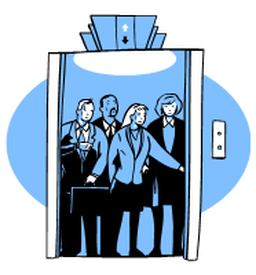 The next thing is to have all your “elevator pitches” prepared, one for each book you have on sale. While some of the people browsing the stall will pick up the book and read the back cover blurb, many of them just pick it up and ask “What’s this book about?” At that point it doesn’t do to be umming and ahing. You have to be ready to tell them about the book in as concise a way as possible. If you aren’t sure what an elevator pitch is, or how to compose one, Google one of the many blogs on the subject. Here’s one we found, but there are many others. https://www.wordstream.com/blog/ws/2022/08/16/elevator-pitch-examples-templates You should have elevator pitches ready anyway, even if you don’t plan to attend any book fairs, because people will ask about your books if they know you are an author. One of our authors once sold a book at a wedding she was attending, based solely on her elevator pitch.  Which brings us to stories. Not the story that is told in the book, that has already been covered above. No, I mean the story of how the book came to be written. Readers love those stories and once they’ve heard them it is far more likely that they will buy the book (but there is no guarantee). Bob has a very good story about how he came to write the biography of his father’s war service. That story has sold him more copies of the book at book fairs than any of his other titles. Then he tells the customers about how that biography inspired his Carter’s Commandos fiction series, and that sells copies of those books. Next you have to be able to deal with all the usual annoying “Would I like this?” sorts of questions that authors always get. And you have to be able to respond without sounding sarcastic. The best way our author found of responding was to reply with a question of his own, such as “What sort of books do you usually read?” 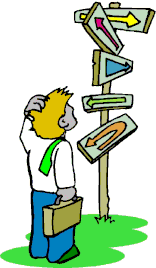 Be prepared to grasp at any straw to connect their reply to your book. It doesn’t matter how far removed from your genre their preferences may seem, making a connection of some sort could lead to making a sale. But don’t be afraid of directing people to other stalls, where they may find what they are looking for. Some people just don't have an interest in your genre (whatever it is). I’ll talk more about that later in the blog. People love a bargain, so being able to discount the price of your books compared to bookshops and on-line retailers is a big plus. Bob charged about £1.50 ($1.35) below the Amazon list price and was still able to make the same level of royalties as he does on-line. His printed price list shows his price and the Amazon price side-by-side, so people know they are getting a discount (they can also check for themselves). Bob also offers further discounts if people buy more than one book. Know what royalties you expect for each book, how much the books cost you to buy (don’t forget the delivery charges) and price accordingly.  One of Bob's props - his father's medals. One of Bob's props - his father's medals. Take “props” with you because they attract attention and encourage questions. Bob displayed the original cover art for his father’s biography and his father’s medals but on other stalls he saw artefacts that relate to fantasy, sci-fi and horror genres. There are internet retailers that sell that sort of stuff, so making a small investment is often worthwhile. If nothing else they are conversation starters and conversations sell books. Other things to think about. Display is a critical part of attracting attention to your books. Not only must the browsing public be able to see the cover, but they should also be able to see the blurb. Bob uses upright stands (available online) to display the book’s cover and lays a copy out flat in front of it showing the back cover blurb. Some sellers print fliers that show the same information, but Bob noticed that fliers often fly away when the wind blows. Books don’t do that. Some sellers also use boxes or small bookshelf units to raise the height of the books. Maybe this is something that you will want to play around with at home to see what works best for your books, when placed alongside other promotional materials such as props. Getting stuff up to peoples’ eye level often helps with sales. Take some freebies and giveaways with you. Bob takes some bookmarks that a colleague made for him. These are handed out to people regardless of whether or not they buy a book.  Cheap pens with the title of your book, your name or your website details printed on them are another good giveaway. They can be bought for as little as 20p (about 16c) each, but you have to buy in bulk. Make sure you have plenty of business cards to place on the stall. Even if you don’t sell a book, the browsing public will take something away with them and they may check out your titles later. And slip a business card inside each book, to be found later. This is especially important if you write series. If you don’t have any business cards, they can be purchased on-line from companies such as Vistaprint. You should always carry business cards anyway, because everyone you meet is a potential customer - they just don't know it until you tell them about your book. Another useful marketing tool is to have small bags into which to put purchased books, with a book title, author name or perhaps a cover image on the outside. In these environmentally conscious times, make sure the bags are made of paper, not plastic. Branded bags are expensive, so buy cheap plain brown paper ones then buy a separate roll of stick on labels with your message printed on them and apply one to the other before you go. Bob bought his bags on Amazon and his labels from Stickythings Limited and the total cost was another £50 ($40).  Bob also bought a tablecloth with our Selfishgenie branding on it (see photo above - we paid some of the cost as it is part of our marketing). It wasn’t cheap, but the cost can be recouped over several book fairs. Take plenty of small change with you. You don’t want to lose a sale because you haven’t got change for a £20 note. Make sure you have a way of accepting credit cards, debit cards, Applepay etc. There is no point in losing a sale because you only take cash. There are a number of companies that provide Bluetooth connected card readers these days and their charges are quite reasonable if you are going to attend a lot of book fairs or “meet the author” events. Bob Cubitt uses Sumup. There is also a long list of sundry items that you might need to have with you. Bob has a checklist he uses before he leaves home, just to make sure he has everything. You can download a copy (yes, it’s free) at the end of blog.  One of the big opportunities offered by book fairs is networking with other authors. They know things that you don’t, and you know things they don’t. Find out about the sorts of books they sell and if that turns out to be the genre your browsing members of the public read, don’t be shy about pointing them in the direction where they can find the right sort of books. And make sure that the authors on other stands know about your books, if they haven’t stopped by to find out for themselves. Ask them about other book fairs they’ve been to and note down the details. Also discuss writers’ groups, both in real life and virtual ones. Other authors are your allies, not your rivals. So, that was our quick whizz around the world of book fairs and other book selling events. If you have any questions, feel free to ask them in the comments section or you can email us at the address on our “Contacts” page. if you have enjoyed this blog, or found it useful, be sure not to miss future editions. Just sign up to our newsletter to be kept up to date. We'll even give you a free ebook if you do. Here’s a few websites for Indies who live in the UK (and one for Indies who live elsewhere). http://smallpublishersfair.co.uk/book-fair-calendar/ https://www.casita.com/blog/uk-book-fairs-you-should-check-out https://www.oxfordindiebookfair.co.uk/ https://10times.com/publishers-fair https://fromesmallpublishersfair.co.uk/ https://www.newarkbookfestival.org.uk/ Multiple nations: https://publishersarchive.com/2023-book-events.html Children’s books: https://www.theschoolrun.com/best-childrens-literary-festivals-uk Black History Month: https://curlytreats.co.uk/2023-uk-black-history-month-events/black-british-book-fair/ For people in the North West of England (or who can get there easily), try this Facebook page. This Facebook page deals in book signing events, which are just another form of book fair. And the download of Bob's book fair checklist:
 People talk a lot about the law of averages. By this they mean that if they do something enough times, there must be enough positive outcomes to balance out all the negative outcomes, to restore an average outcome at some imaginary point. This is a fallacy. It is also flawed thinking. Except in purely mathematical terms, there is no “law of averages”. For some things there are only ever negative outcomes or positive outcomes. There is no celestial balancing act between the two. The sheer number of variables in so many of life’s occurrences mean that no “average” could ever be achieved, because each one is essentially unique. People confuse the laws of statistical probability with the law of averages.  Statistical probability relies on things not changing between one occurrence and the next. If you toss a coin 100 times, for example, it should come down heads 50 times and tails 50 times. The amount of force used varies from coin toss to coin toss but, statistically there are only two possible outcomes, so the probability of one outcome vs the other is 50:50. But in most of life's occurrences, there are too many variables for statistical probability to give you a 50:50 outcome. In any occurrence the number of variables is sometimes so great that the number of possible outcomes is mind bogglingly large and there is no guarantee that any of those outcomes is going to be a positive one. 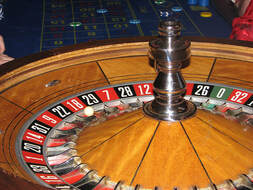 Gamblers work on a different fallacy with regard to "the law of averages". They believe that if something hasn’t happened for a while, (like the little white ball landing on certain number on a roulette wheel), then, by the “law of averages” it must happen very soon. However, where the ball lands on a roulette wheel is random (if the wheel isn’t rigged). The ball can just as easily land on the same number twice in succession as it can land on a number that it hasn’t landed on in a while. The ball hasn’t any will, so it can’t choose where it lands. The ball also has no memory, so it doesn’t know where it has landed and where it hasn’t (the same applies to lottery numbers). But the speed of the wheel, the way the croupier places the ball onto the wheel, and the point at which it is placed, are all variable, making each turn of the wheel unique.  Similarly, if a racehorse hasn’t won a race in a while, there is no reason to suppose it will win its next race. It isn’t winning races because it isn’t as fast as the other horses. It is not suddenly going to get faster, nor are the other horses suddenly going to get slower, just to satisfy some non-existent “law of averages”. A change of jockey or a change in trainer may result in the horse winning a race, but that has nothing to do with the “law of averages” because something has changed, therefore changing the likelihood of the outcome. It is the change that made the difference. Let me give you an extreme example. If you stick your hand in a fire, it will get burnt. That is a negative outcome. But there is no positive outcome. You cannot ask 100 people to stick their hand in a fire and get a negative outcome in the belief that the 101st person to do it won't get their hand burnt in order to satisfy the “law of averages”. I’ll give you another example, this time less extreme.  If a job applicant sends out their CV (resumé for our American readers) to 100 companies and gets no response, sending it out to another 100 companies does not mean that there will be a company that will decide to take a chance on the applicant, just so the “law of averages” can be balanced out by a good outcome. If a CV has been rejected 100 times, there must be something wrong with it because 100 companies are not going to reject a good candidate for a job. And so we get to the nub of this week’s blog. 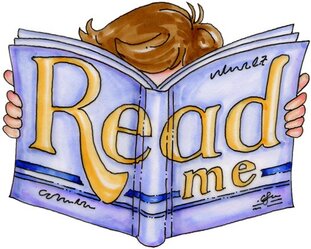 When it comes to querying a book, there is also no law of averages. OK, not every agent that the MS is sent to will be the right agent for that book. A bit of research can eliminate those before the query is even sent. Also, some agents may not really be looking for new authors, so they will reject the MS and other agents may not read the submission properly and so will reject it because they didn’t “get it”. There may be other reasons why some agents reject an MS which have nothing to do with their literary merits. Who knows? But sending a query out time after time and getting the same result doesn’t mean that the law of averages says that on the next attempt you will hit the target with the right agent. If you get past a certain (unspecified) number of rejections, then it probably means that no one likes your MS and the time has come to stop sending out queries and start reviewing your MS to find out what is wrong with it. or to review your options for getting your book published. Or both. In other words, it’s not them, it’s you (or, rather, it’s your MS).  We see a lot of posts on social media with people saying they’ve sent out their MS again to another hundred agents, or direct to publishers, and this time they’re hoping for better results. If you have made over 20 queries the chance of finding an agent is actually getting smaller, not bigger because there is no law of averages. There is only an MS that agents/publishers like or one that they don’t like enough to take a chance with. Don’t take that number of 20 as being some sort of empirical threshold. It just feels about right to us. Maybe it’s 25, maybe 30, but we doubt that it’s much higher. Einstein defined insanity as doing the same thing over and over again and expecting different outcomes each time. He knew there was no such thing as a “law of averages”. So, are you displaying that sign of insanity?  In the world self-publishing this maxim also applies. If you have tried the same things time after time to sell your book and sales haven’t improved, there is only one of two conclusions you can draw. Your approach to marketing is wrong, or the book isn’t attracting readers for some other reason. If the marketing you are doing isn’t selling your book, then you have to try something new. If you always do what you always did, you’ll always get what you always got. If you want something different you have to do something different. And if you have tried something different and the book still isn’t selling, you have to look at the book itself and ask why readers aren’t attracted to it. Maybe it’s the cover image. Maybe it’s the blurb. Maybe it’s the “look inside” sample, or maybe it’s the reviews that have been posted. Maybe it’s something else entirely. But the thing it won’t be is the law of averages. If you have enjoyed this blog, or found it informative, then make sure you don’t miss future editions. Just click on the button below to sign up for our newsletter. We’ll even send you a free ebook for doing so. 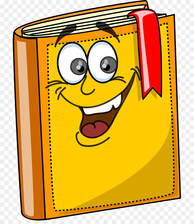 We see a lot of discussion on social media about which is best – traditional publishing (which we will abbreviate as TP) and self-publishing (abbreviated as SP). Within self-publishing we include small publishers such as ourselves, because we use most of the same channels for distribution and marketing as SP authors. We also see a lot of newbie authors asking whether they should go TP or SP before they have even written their book. We’ll circle back to that one later in the blog. The problem is that neither one nor the other is better in terms of choice. It may come as a surprise to budding authors, but you don’t get to make the choice. It may be your ambition to become a TP author, but agents and TP companies actually make the decision. Which means it’s their choice, not yours. All you can do is choose to try to become TP or choose not to bother but to go the SP route straight away.  Our advice would be always to try TP first. The reasons are quite obvious, but we’ll lay them out for you: 1. Access to wider distribution channels, especially major high street retailers. 2. Access to wider markets, such as overseas territories. 3. Professional support, especially editing and proofreading, but also cover design, blurb writing, translators etc. 4. Large marketing budget. 5. Marketing professionals selling your book for you. 6. Reputation and credibility (SP authors are often not regarded as “real” authors). To turn your back on all that would be foolish, so it is worth giving TP your best shot. But let’s do a reality check. 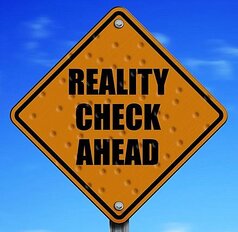 In the UK there are probably in excess of 50,000 working authors who haven’t got a TP contract already. That is a conservative estimate. The actual figures could be much higher because many aspiring authors don’t announce what they are doing. In the USA that figure is probably ten times as high. In the UK there are 9 big name publishing companies (by value of sales*) with an alliance of smaller publishers taking up the number 10 slot. In the American top 10 some of the same names also appear, along with some purely domestic publishers.  Each of those top 10 UK publishers will sign perhaps 100 new authors a year, 1,000 in total. So, that gives a 49 to 1 chance of any of those 50,000 authors getting a publishing contract. I wouldn’t bet on a horse at those odds and, remember, that’s a conservative estimate. There are a number of smaller publishers who deal in niche genres or markets, but they take on far fewer new authors each year, so they don’t really feature in our calculations. So, in the UK, for every 50 authors working today only 1 is likely to get a TP contract. That doesn’t mean you shouldn’t try. It just means you have to prepare yourself for rejection. And even if you do get a TP contract, you will probably receive a lot of rejections along the way so, again, you have to be prepared for them. 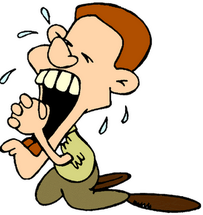 An author who finds an agent or publisher with their very first query us as rare as a unicorn. Querying a book is brutal. We know, because everyone employed by our company has tried it at some time. That leaves 49 authors out of 50 to go the SP route or not bother publishing at all. I’ve already listed what you get with a TP contract, so if you go SP you have to provide all those things for yourself and that gives you two more choices. 1. Pay other people to do those things for you, or 2. Learn how to do them for yourself. We made a conscious decision not to pay people to do things we can do for ourselves. If we don’t know how to do something, we will learn how to do it. It is always going to be cheaper in the long term to learn something, because you only have to pay once. If you pay someone else, you have to pay every time you want to do it. If you plan on writing a lot of books, then the costs will mount up and every penny spent means a penny that has to be earned back in sales. At the end of this blog we’ll direct you to a resource that provides free training in some essential skills, such as writing, proofreading, editing and marketing.  Time for another reality check. If you think that writing a book is hard, then you are going to be shocked at how hard it is to market the finished work. We have posted a lot of blogs on book marketing over the years and we are still seeing the same issues being discussed on social media. This means one of two thing. Either people haven’t read our blogs on the subject (or anyone else's blogs about it), or it means newbie authors don’t realise that SP also means SM (self-marketing). It doesn’t matter which publishing website you use (KDP is one but there are several others), after you have clicked on the “publish” button, the real work is only just starting. 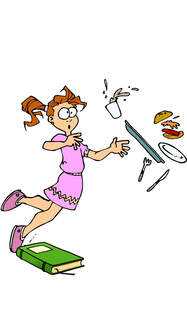 Nobody is going to stumble on your book by accident. Once your family and friends have bought a copy of your book, sales will dry up if you aren’t doing any marketing. If you have chosen the right keywords when you published the book, it will turn up in searches, but it won’t be on the first page. It may not even make it as high as the 10th page. Books that turn up on the 1st page of search results get bought, which is why paid advertising is used: it gets your book onto the first page. 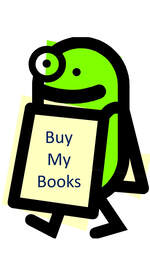 Some books that turn up on the 2nd page of results may get bought. Books that turn up on the 3rd page or more rarely sell any copies. So, you have to find the ways of getting your book in front of readers and that is what marketing is all about. And if the SP author doesn’t do the marketing, nobody else is going to do it for them unless they are paid to do it. Which is why we always recommend going the TP route first, because if you don’t try, you can never succeed. Now, I said we’d circle back to wannabe authors fretting over the best way to publish their books before they’ve even written the book.  It’s very simple. If you haven’t written the book, you haven’t got anything to publish, so there is no point in fretting about whether to try TP or go straight to SP. At the very best you are wasting time that could be spent writing and, at the very worst, worrying about that sort of thing could cause writer’s block and you’ll never get your story written anyway. The time to worry about getting your book published is when you actually have a book. Not a first draft. Not a second draft. But a book that is the very best version of itself and has been tested on beta readers and then improved again based on their feedback. 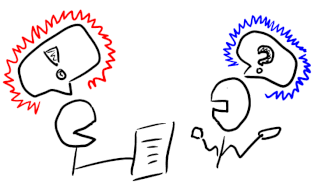 Once you have that, you can start to worry about going TP or SP and, if you are going TP, how to go about finding an agent, because very few TP companies accept direct submissions and the ones that do aren’t in the top 10. If your beta readers are telling you that the book isn’t that great, then trying to go either route probably isn’t worth your while. Sadly, not everyone who wants to be an author has to the talent to become one. But that doesn’t apply to you, of course. And, finally, just to clear something up. If you have written a book you are a real author. Being an author doesn’t depend on how your book is published. There is a growing list of SP authors who make 7 digit incomes from their books, which some TP authors (aka “real” authors) will never make. As an SP author there is nothing stopping you from joining that list, except for yourself. For access to free training in a range of publishing skills, try FutureLearn * The largest TP company in the UK top 10 is Penguin Random House (£409 million), the smallest is John Wiley and Sons (£28 million). If you have enjoyed this blog, or found it informative, then make sure you don’t miss future editions. Just click on the button below to sign up for our newsletter. We’ll even send you a free ebook for doing so.  As publishers we belong to several writing groups on social media (not always under the “Selfishgenie” branding). They help us to keep in touch with authors, see what sorts of issues are bothering writers and which we might also need to be bothered about (AI is a hot topic right now), and to offer advice to writers who are struggling to understand the complex world of writing and publishing and how the two connect up. We believe that by helping authors we also help ourselves because we get better quality books submitted. It also helps to improve the quality of work being produced by indie authors and small publishers, so we can all compete better with the big boys (or girls) with the fancy offices. So, everyone benefits, and nobody suffers, except maybe the big boys (or girls) in the fancy office blocks.  But there is an annoying habit some people have on social media, which is to ask a question and then argue with the answer. This is a generic thing on social media, of course, but when it happens in writing groups where people are supposed to be supporting each other, it is contrary to the spirit of providing support. Now, we’re not talking about arguing with facts. If facts are wrong then they have to be corrected because, otherwise, misinformation gets circulated around and that helps no one. No, we’re talking about arguing with opinions. Let’s start with the basics. 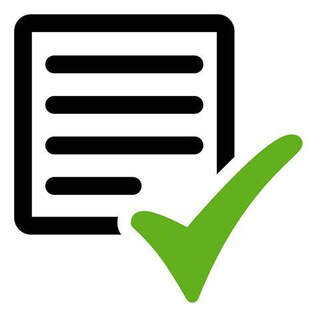 Social media does not exist to validate anyone. If you post something on social media expecting universal approval, you will be disappointed. If all you want or expect is validation, you are in the wrong place. Secondly, if you post a question on social media, you will get answers with which you agree and answers with which you disagree. The sorts of posts I’m talking about are cover images, extracts from stories, drafts of blurbs and synopses and perhaps the odd idea for a story and the author wants to know if it’s likely to find readers. But there are plenty of other sorts of questions, such as the viability of self-publishing, How and where to self publish, the best way to market books, author’s experiences of dealing with certain companies and so on. In fact, if you can think of a question even remotely related to writing or publishing, someone will have asked it or will ask it in the future. That’s all great. Social media is a great place to post stuff or ask questions if you want feedback, advice or information. BUT 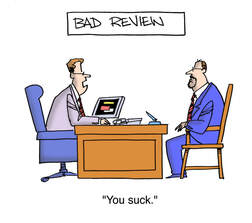 Not all the feedback will be what you want to hear. Just because someone thinks that a story idea is brilliant and the greatest idea since Harry Potter, it doesn’t mean anybody else will think the same. To coin an old phrase, just because you think something is a good idea, it doesn’t mean it is. The “remainder bins” are full of books that authors (and some publishers) thought were good ideas and it turned out that readers didn’t agree with them. There are other aspects to this, which come down to good manners.  Firstly, someone has taken the time to read the question, study whatever it was that was posted, thought about their opinion and posted it. That, at least, deserves a thank you, not an argument. Secondly, it is an opinion. Nobody has to agree with it but, equally, arguing about it serves no purpose. They won’t change their mind. Yes, you may have slaved for hours drafting what you think is the perfect blurb and posted it on social media only for someone to say “No, mate. I wouldn’t buy your book based on that blurb.” Yes, that is very disappointing. Yes, it may be discouraging. But that opinion may be important.  If someone has said that, then others may be thinking it. And if people are thinking it, then the chances are that whoever made the statement is right and the blurb won’t sell any books (ditto covers, sample chapters etc). The correct response to that is not “You don’t know what you are talking about.” or words to that effect. The correct response is “Thank you for your input..” What I’m trying to say is, if you don’t want to know the answer, don’t ask the question. 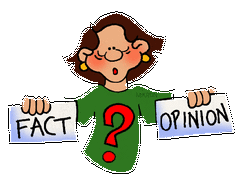 If you post your book cover and say “Here it is, the cover of my latest book.” Then you can disagree with people who say they don’t like it, because you haven’t actually invited their opinion. But if they’ve expressed an opinion they still won’t change their mind so there isn’t much point in arguing with them anyway. But if you post your latest book cover and say “What do you think of this?” then it’s open season for opinions. It’s possible that not everyone will think it’s as good as you think it is, and some people will tell you that (probably us), because you asked them what they thought of it. If you get defensive and challenge their view, you are alienating that person and they might be one of the people who would have bought your book – but they won’t now. Or, worse, they may buy it, review it and say what an awful cover it had. Yes, people really do that.  And, ultimately, they may actually be right, and it is better to find that out before you publish your book than afterwards. All input is valuable, especially from the people who actually read books. So, with this in mind, we have brainstormed a list of do’s and don’ts when posting about your books on social media (they are opinions, so feel free to disagree with them or to suggest others). 1. If you don’t want opinions, don’t ask a question. Better still, don’t post on social media. 2. If you haven’t asked a question, then by all means get into an argument, but bear in mind that it may damage your reputation and sales. 3. If you ask for opinions, bear in mind that some of the opinions you get may not be what you want to hear. That doesn't make them wrong. 4. If you disagree with an opinion, don’t argue with it, just ignore it. 5. You are not perfect, and you probably aren’t the world’s greatest author. But you could be if you listen to advice from other authors. 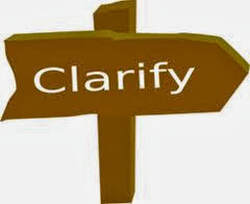 There is one question that you can ask with regard to someone’s opinion and that is “why?”. The reason they think the way they do could be important and could provide you with valuable information, which can inform any changes you may decide to make. However, you have to ask the question the right way. “What do you mean?” is very blunt and sounds defensive. It doesn’t encourage an answer. Or if it gets an answer it might be “I mean what I mean!” which isn’t very helpful. So, here’s a form of words which encourages people to elaborate on their opinion and provide the sort of information you might need (feel free to copy and paste into your social media). “Thanks. If you don’t mind me asking, what is it about (whatever) that makes you feel that way?” When (if) they reply, you may ask other questions to clarify, but make sure whatever you ask doesn’t challenge their view, even if you disagree with it. If you do disagree, you can still ignore the reply, or you can limit your response to “Thanks for your input”. In fact, you should say thank you regardless of what you think of the answer.  There is a subset of the issues I have explored above and that is when people who didn’t ask the question argue with people who have expressed opinions. For some reason these people think they have to leap to the defence of the person who made the original post. They don't. To coin a phrase - not your circus, not your monkeys! Or perhaps they think their opinion is more valid than the one that has been expressed. I have news for them. Their opinion is not more valid, unless they can prove they are an expert on the subject under discussion. All of the above guidance applies to that too. You may not share their opinions, but that doesn’t make you right and them wrong. And vice-versa. If you want to get into an argument based purely on opinions, there is plenty of scope for that in the political groups. In writers’ groups we are supposed to be supportive, not divisive. Belonging to a writer’s group on social media can be highly beneficial to an author. There is plenty to be gained by sharing knowledge and information. But they are also places where it is easy to alienate potential customers, because writers are also readers. So being diplomatic in the use of language is extremely important. And for those of you (us) who give our opinions, whether invited or not, be diplomatic in the way you express yourselves because if you want to be treated with good manners, you must first practice good manners. If you don’t like something, give a well-constructed reason why because that will be more helpful than just saying “I don’t like it”. If possible, provide examples of good practice, or point people in the direction where they can get more help, If you have enjoyed this blog, or found it informative, then make sure you don’t miss future editions. Just click on the button below to sign up for our newsletter. We’ll even send you a free ebook for doing so. Traction and momentum are things that marketers talk about in terms of their campaigns. It relates to the amount of effort that needs to be put in to get results from a marketing campaign and how, once traction has been gained, momentum can be achieved. In terms of money spent, this usually means a lot of it is at the beginning of the campaign, but once traction has been achieved, a lot less has to be spent to maintain momentum.  Let me use an analogy. If you put your child on a swing (assuming you have a child – if you haven’t, you’re a writer, use your imagination) and do nothing, then the swing will just hang there and the child will get no enjoyment from being on the swing. So, you need to apply some effort to get the swing moving so that the child can enjoy the experience. Depending on the size of the child and your own strength, you may have to put in quite a lot of effort to get the swing moving. However, once the swing is moving, all you have to do is step in from time to time to give it another shove to keep it moving. That is what it is like marketing a book.  Newton's 1st Law of Motion - an object at rest will remain at rest. Newton's 1st Law of Motion - an object at rest will remain at rest. If you just upload your book to your distribution platform (I’ll use KDP and Amazon for the sake of ease) then it’s like putting the child on the swing. Nothing will happen unless you make it happen. Yes, Newton’s first law of motion applies even to book marketing – an object at rest will remain at rest. So, once your book has been published, you have to provide the outside force that acts on it to take it from a state of rest to a state of motion and get sales moving. If you are an unknown author publishing your first book, you will have to put in a lot of effort. If you are an established author with a loyal readership, you won’t have to do quite so much – but you still can’t do nothing. Even loyal readers need to know that you have a new book out. But the amount of effort you put in will eventually pay off. You will make sales. The sales will put your book higher up the sales ranks, so Amazon will help you by steering readers towards your book because that will make Amazon more money, and your readers will help you by leaving reviews of your book.  But you can’t back off entirely. Once your new readers have bought your book, they aren’t going to buy it again. This means that your book will start to slide down the sales rankings, the automated systems will pay it less attention and you won’t make so many sales. So, you have to step in and give your swing another push, just to get things moving again. Social media marketing has a part to play in this, but it is never going to provide you with the big push you need to get up the sales rankings. It will sell you the occasional copy, which is the equivalent of the swing just about moving back and forward. Let’s face it, that wouldn’t be very exciting for your child and, in terms of books sales, it isn’t going to be very exciting for you. So, you need to find some way to give the book a bigger push. 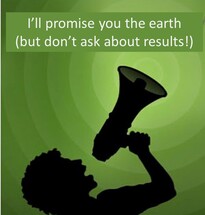 On the internet there is no shortage of people willing to make you lavish promises of results in exchange for your hard earned money. Some people do find success with those book promoters, but I think that it’s true to say that the majority don’t or, at least, they don't get the level of success they had hoped for and which will return a decent profit. Most of the internet companies are using social media to promote their customers’ books and are just doing what you could do for yourself, but on a larger scale, eg more Tweets (are they X’s now?), more Facebook posts, more Instagram posts etc. Again, they may get you a few sales, but they aren’t going to get you to the heights that will get you excited. But there is one tried and tested method to stimulate books sales and we have blogged a lot about it over recent weeks. Amazon Ads do produce results. 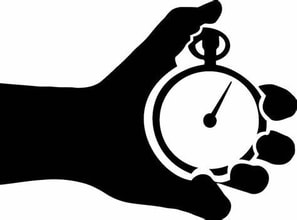 The problem with Amazon Ads, however, is that they take time to work. It seems to take an eternity to build traction and get your sales moving. Many Indie authors place an ad for a week or a fortnight, find the results disappointing and halt the ad. Instead, they look for the on-line book promoters who promise instant results, then get very disappointed when they find that they are spending larger sums of money but getting very indifferent outcomes. So, why does it take so long for Amazon Ads produce results?  I’ll return to my child on a swing analogy, but this time imagine you are on the one on the swing, with no one to push you. By moving your body the right way, you can get some motion, because you are putting energy in and that energy has to go somewhere. But you need to keep putting in energy to get you moving faster and higher. If you stop putting in energy, the swing will slow down and stop. To start with, you have buyer resistance. Advertisers maintain that an advertising message has to be seen 7 times before some buyers respond to it. This is why you will see the same ads on TV several times in a night and several more times over successive nights. The marketers are trying to get those 7 viewings in quickly, so the ad starts to pay back through increased sales. 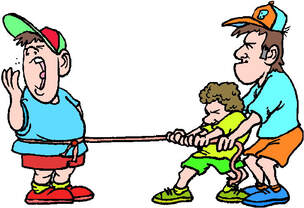 Think about that for moment. Let’s say that Mr X, a reader, goes on Amazon to find a new book. He does a search for the sorts of books he likes to read, and he is presented with a list of results. If you have paid for an advert, then your book will be one of the ones he sees. It’s called an impression and you don’t have to pay for it. However, Mr X has never heard of you, so he scrolls down to the next result, which may be a book by an author he has heard of. He buys their book instead of yours. But Mr X has a limited amount of free time, so it takes him about a week to read the book before he goes back to Amazon to buy his next one. He sees your ad again, but again he scrolls by, looking for a more familiar name. This happens maybe four or five times over the space of four or five weeks, but Mr X then realises that he does know your name now, because it has become familiar through repeated impressions, so this time he might click on your ad. Now, if you pulled your ad after week 2, you could never get that click from Mr X at week 6 or 7.  The ad system analyses Mr X's clicks. The ad system analyses Mr X's clicks. So, this is the first time you have had to pay, and it is also the first time that Mr X is seriously considering buying your book. He may buy it this time, or he may not. A lot will depend on the blurb for the book and the sample he may read. But he will remember your name now, so every time he sees your ad, you have a chance of him buying the book. But, because Mr X has clicked on the ad for your book, the ad system now knows that he might be the sort of reader who will be interested in your book. So, the system analyses the ad clicks that Mr X has made in the past, looks to see who else has clicked on the same books and shows your ad to them, even though they may not have used the same search words as Mr X. You can see this system in action on Amazon, because they show you “People who viewed this item also viewed ….” And “People who bought item this also bought…”  Someone taking a risk on your book. Someone taking a risk on your book. This means more people are now going to see your ad and every time one of them clicks on it, the ad system learns a little bit more and directs your ad to more new people. More new potential readers means more potential clicks and more potential sales. But you still need that first sale, because if your book is low down the sales rankings, it discourages some readers. So, you need to find a reader who is prepared to take a chance on your book without looking at the sales rankings. And they do exist. We know they do exist, because that’s how our authors all sold the first copy of their book. We paid for the advertising, of course, but someone took a chance on them. And someone, somewhere, will take a chance on you – but only if they see the ad for your book often enough. The same applies to reviews. Some people will only buy books if they have reviews, so you need some of those to be posted, which needs sales too (please do not pay for reviews. Amazon is able to spot them and will remove them, so you will only be wasting your money.) So, the graphic below illustrates the process by which ad clicks get turned into sales, which creates traction and leads to more sales, which creates momentum. But, as I said above, the system needs a shove from time to time to keep things moving, so you will need to keep advertising, if only at periodic intervals. You can tell by your sales figures when that should be. If you were making 5 sales a day consistently and that starts to drop to 4, then 3 then 2 etc, it’s probably times to liven things up again with another ad campaign. 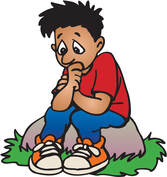 Blog Reader: “But it takes so long, and I have to spend so much money.” Yes, but if you are using the system correctly you will get that money back when you gain traction. If you put nothing in, you get nothing out. Remember Newton – an object at rest will remain at rest unless an outside force is applied. You have to be the outside force! And at least you know where your money is going and you are in control, unlike with those on-line marketing companies that promise so much but deliver so little. 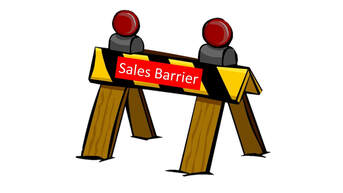 It took you weeks, months, maybe even years to write your book. It can hardly come as a surprise that it could take weeks or even months to get some sales, gain traction and build momentum. And, if you haven’t made any sales after say, 3 months, then it might be worth considering why that may be. Because advertising can only sell a book that the reader wants to read, so if they don’t want to read your book, there has to be a reason and you know the fault can’t be in the advertising, so it has to be in the product. If you have enjoyed this blog, or found it informative, then make sure you don’t miss future editions. Just click on the button below to sign up for our newsletter. We’ll even send you a free ebook for doing so. 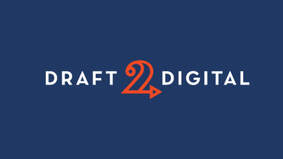 For those of you that have come here looking for a blog about Universal Book Links, aka UBLs, fear not. We’ll get to those in a moment. But first, we want to revisit a blog we posted in April 2023, about distributing some of our books through Draft2Digital (aka D2D). At that time, we said that we had sold a few books on that site without doing any marketing for them. People seemed to have found their way there by themselves, probably via the companion site to D2D which is Books2Read (aka B2R). We said then that we would let you know how things were going once we had some more data, which is why we are blogging about it now. 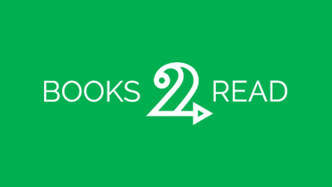 To save you having to read the blog again, we’ll just give you a little bit of background to explain why we decided to use D2D as well as Amazon. Basically, while we were selling a few copies of some books in ebook and paperback formats, they weren’t being downloaded on KindleUnlimited. (KU). Putting books on KU requires the author to make them exclusive to Amazon, so they can’t be sold through any other on-line retailer. So, we thought, if they aren’t being downloaded on KU, why are we keeping these books exclusive to Amazon? We may be missing out on sales through other sites. We uploaded the books to D2D which then distributed them through several other on-line retailers. I won’t list them all. Visit the D2D website for the full list.  And it seems to have worked well for us. We have sold more copies of the books through D2D in 4 months than we had in the previous year through Amazon. It told us something, though we weren’t sure what until we did some digging into the sales reports. Most of our sales, historically, have been to the UK. That isn’t surprising considering most of our authors are British and they write mainly for the British market. We do get the odd sale through Amazon to the USA, India, Australia and a couple of other countries but when we looked at our D2D sales data it was noticeable that we were getting a far greater geographic distribution. Almost none of our new sales were to the UK and our overseas sales were far more widely spread, taking in the European Union, the United Arab Emirates (UAE) and New Zeeland.. None of our titles have been translated, by the way. All of these new sales are in English.  It was also noticeable that a lot of the sales were in paperback format, costing far more on D2D than they do on Amazon. The question we had to ask was “Why”? 1. Why were we reaching countries we had never sold to before and 2. Why were we selling so many expensive paperbacks? The conclusion we had to draw was that it was because we were using Universal Book Links (UBLs). See - I told you we would get there eventually. 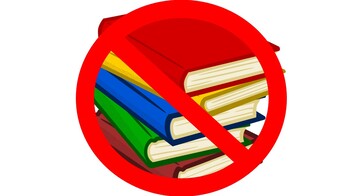 A UBL takes the reader (a) to the retail site they prefer to buy from and (b) the retailer’s site which deals with the country in which they live. When it comes to paperback sales, this is very important. Some retailers who sell paperbacks either don’t print them in some countries or they don’t deliver books to some countries. So, our UBLs were taking buyers to the sites where they could buy paperbacks and get them delivered to their country. They also had the price displayed in the appropriate currency for their country, or one they were familiar using. That is a strong psychological factor for some people. If someone usually pays in $, ¥ or €, seeing the price displayed in £ can be off putting. When you upload a book to D2D it creates a UBL for it automatically if you also subscribe to B2R (it’s free), which you can then copy and paste into all your marketing materials, which we did. 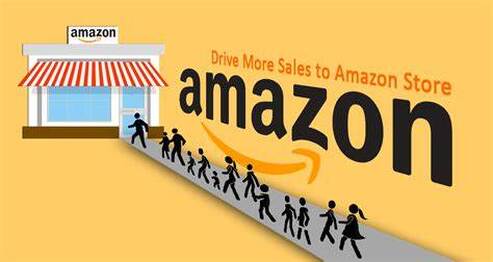 OK, if you click on a link to Amazon and it doesn’t take you to your local Amazon site, they will offer to redirect you to your local site but that, also, is too much hassle for some readers. So, if getting better global distribution sells more books, how could we exploit that for the books that are still exclusive to Amazon? After all, we want to sell through all the Amazon sites across the world and we want to make the process as hassle free as possible for buyers. Well, it turns out that those nice people at B2R will also allow us to create UBLs for books that are sold on Amazon but not on D2D. How cools is that?  So, using this link, we sat one of our team down in front of a PC and set her to work creating the UBLs (look in the top RH corner for the UBL maker) for all the books we sell exclusively through Amazon. It took about 30 seconds for each book title, but we kept her well refreshed with coffee and donuts while she did it. A couple of warnings. Firstly, if you use URL shorteners, such as bitly or tinyurl, they can’t be converted into UBLs. You have to copy the book’s URL direct from its Amazon sales page. You also need to use the link to the Kindle edition of the book, not the paperback. If there is a paperback version, the UBL will link to it, but the link creator doesn’t like links to paperbacks if you paste them into it.  The other things is that the system does seem to be a bit flaky and doesn’t always work first time. Our colleague kept getting a warning that the Amazon link she had pasted wasn’t recognised as a link to an ebook, even though it was. She found that if she kept clicking on the “Got it” button in the warning pop-up, the link was eventually created. A couple of times she had to re-paste the Amazon URL to get it to work, but a little bit of perseverance and patience got the job done. So, having done all that work, has it increased our overseas sales?  Well, it appears that it has. We now use UBLs in all our marketing and they seem to be delivering for us. So, our main takeaways from this week’s blog: 1. Using D2D can increase your sales, because you reach a wider book buying market. 2. UBLs help you increase sales across the world. 3. You can create UBLs which will take Amazon users to their local Amazon website, wherever they are in the world. If you want to do some experimentation, it may be worth your while, but do remember to unsubscribe your book from KindleUnlimted before you upload it to D2D, or Amazon will get a bit touchy about it. If you have enjoyed this blog, or found it informative, then make sure you don’t miss future editions. Just click on the button below to sign up for our newsletter. We’ll even send you a free ebook for doing so.  Finding the right keywords to include in an Amazon Ad can be a very time consuming activity. Gurus like Bryan Cohen, of Best Page Forward, recommend using 100 - 150 keywords in an ad, and also recommend creating 5 to 10 ads a week. So, that mean finding anywhere between 500 and 1,500 keywords A WEEK! That’s a lot of keywords and it could take a lot of time researching them all. If it takes 1 minutes to research one keyword, that could be as much as 2½ hours to generate enough keywords for a single ad. For 5 ads that could be 12½ hours a week. Who wants to spend that much time on a single marketing activity? Not us, that’s for sure. 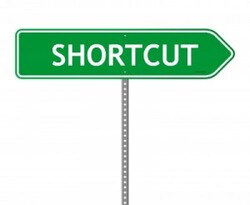 So, we love it when we find a short-cut that will save us some time. To give you some idea of how long it took us to find 150 keywords and create an ad with them, the total was 25 minutes (if you exclude making cups of coffee and answering the telephone). It took us longer to write the first draft of this blog about it! I think most of us can squeeze 25 minutes out of our busy schedules if it means getting an increase in sales for our books. So, how is this magic worked? I’m going to take you through it step by step. The first few steps you may not need to do at all, or you may need to do them only once. The later steps are the ones you have to do every time to generate a list of 100-150 keywords.  If you have any questions after reading this and trying it out, ask them in the comments section and I’ll get back to you as soon as I can. There are 36 steps to this procedure, which seems like a lot, but some of them describe just one mouse click or screen tap. Once you are familiar with it, the whole process takes a very short time, so don’t be put off by that number. You may want to do a “split screen” on this, so that you can read the instructions from the blog and then try them out as we go along. Or you may prefer to print this blog and follow the instructions that way. OK, let’s go!  1. If you don’t already have the Google Chrome browser installed on your PC or laptop, download and instal it. 2. Once you have Chrome installed, open it and instal “Kindletrends Also Bought downloader” It is free. It will instal into Chrome automatically, so you don’t have to do anything (you can also instal the extension into other browsers, but we don’t have a full list which is why we specify using Chrome). 3. Open Chrome and look at the top right hand corner of of the page and you will see 3 vertical dots. Click on those to access the Chrome settings menu. 4. Click on “Extensions” and then “Manage extensions”. 5. Locate the “Also Bought” downloader extension and click on “Details”. 6. Locate the line that says “Allow in incognito” and switch it on if it isn’t already switched on, then exit back to the Chrome home screen. That is the end of the steps that you will only have to do once. Now for the steps you have to do every time.  7. At the top right hand corner of Chrome, find the 3 vertical dots again and click on them. 8. Click on “New incognito window”. The reason you use incognito browsing is so that Amazon doesn’t identify you from your IP address and start to offer you the sort of books that you normally read. You want to find the sort of books that you write, which may be different. Now you are going to identify books like the ones you write. You may have some of these by other authors on your own bookshelves, which is a good place to start. If you haven’t, then you are going to have to take a more “trial and error” approach. We use Publisher Rocket to help us identify books and authors in the categories in which we are advertising, but if you don’t have that, don’t worry. I’ll assume you don’t have any relevant books to hand, and you don’t have Publisher Rocket. 9. In your incognito browser, go to the Amazon website for the country in which you wish to advertise. For example, you may live in UK but want to advertise in the USA, so you need to go to Amazon.com. Conversely you may be the USA but want to advertise in the UK, in which case you need to be on Amazon.co.uk. The site you choose will affect the results of your search, which you are going to do next. 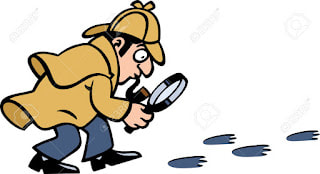 Some authors have international popularity, but many don’t. There is no point in including keywords relating to an author who is popular in the USA but no one on the UK has ever heard of, and vice versa. 10. In Amazon’s search bar, type in a search term for the sort of books you write. For example, you could type in “historical romance” if that is what your write. But you may want to narrow that search down a bit by adding tropes from your book, such as “enemies to lovers” or “pirates” or whatever tropes you have used in your book. You can also search using an ASIN, a book title or the name of an author if they are in a category relevant to your book.. 11. From the search results, choose a book that you think is similar to yours and click through to its sales page. Make sure you are viewing the version you are going to be advertising, eg ebook, hardback or paperback.. 12. Read the blurb to check that it is like yours. You may even want to read a bit of what used to be called the “Look Inside” but now is just referred to as a sample. 13. If you are happy that the book is one that you might find on the same shelf as yours in a bookstore, go to step 14. If not, go back to step 11 and repeat. "You will see a whole jumble of data that doesn’t make much sense." 14. Now scroll down the page until you get to the carousels that are named either “What did customers buy after viewing this item?” or “Customers who viewed this item also viewed” (the words may vary a little depending on which country you live in). The former is the best but isn’t always displayed, so you may use the latter, but you can also use both if you wish. You will get some duplication in your results, but there is a simple step to remove them later. 15. Next to the text described in step 14, you will see a little icon that looks like a blue fairy cake with a red candle. This is the icon for the “Also Bought” plug-in. Click on this. The books displayed will start to scroll across the screen, which indicates that their details are being downloaded. When the scrolling stops, the download has finished. This could take up to a minute, depending on how many books there are in the carousel. 16. You may repeat steps 11 to 15 to gather more keywords, or you can go straight to step 17 and return later if you think you need more keywords. 17. Open “file manager”, locate the downloads folder and open it. 18. Open Excel (or whatever spreadsheet app you use) and open a new spreadsheet. 19. In the downloads folder, you will see the list of downloads that you created at step 15. There will be a .png version and a .txt version. The .png is an image of the book covers. You don’t need to use that. Double click on the .txt version to open it. You will see a whole jumble of data that doesn’t make much sense. DON’T PANIC! 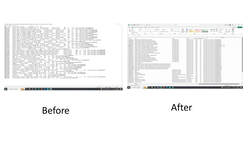 20. In the text reader, go to “edit” and then “select all” to highlight the text, then copy it. 21. Paste it into the spreadsheet. It should now be nice and neatly displayed in columns, starting with the ASIN (Amazon’s catalogue number) on the left, then the title, series name, author name and then the other stuff. You can delete all the stuff to the right of the author’s name if you wish. 22. Repeat steps 17-21 for each of the .txt files you downloaded. 23. I don’t use ASINs in my keyword searches, but if you wish to you can. Everything I say from here on applies to them as well as to the other columns. 24. In an ordinary browser, Open “Keyword Cleaner”. This is a free webpage which will help you to clean up your keyword list (don’t forget to add it to your “favourites”, because you will use it a lot). 25. Copy the contents of one of the columns of your keywords from the spreadsheet. I always start with “title” and you will see why at step 34. 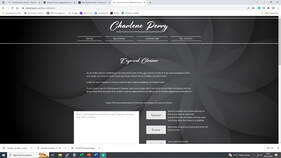 26. Paste that into the big box on Keyword Cleaner. 27. There are 6 buttons to the right of the big box and you will use at least 5 of them. 28. Click on the button marked “Separate”. This will remove any subtitles or series names that have been included with the title, providing they have been separated from the title by a semi-colon, colon, hyphen or brackets. They will re-appear in smaller boxes further down the page. 29. Click on the button marked “Format”. This will remove most of the special characters that Amazon Ads doesn’t like, if there are any in the list. 30. You can click on the box marked “Sort A-Z” but I don’t usually bother. Amazon Ads sorts keywords alphabetically after they have been entered anyway. 31. Click on “De-duplicate” This removes any duplicated entries. 32. Click on “Copy”. 33. Open a “Word” document (or similar) and paste the list of keywords into the document. 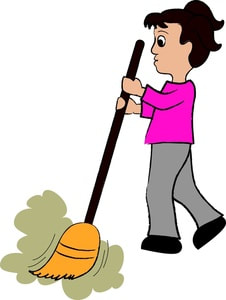 It may be necessary to clean up the list. It may be necessary to clean up the list. 34. Keyword Cleaner isn’t smart, so it can’t always recognise subtitles and series titles and remove them, so it may be necessary to “clean-up” the list a little bit more at this point. This means removing anything from the title that shouldn’t be there. For example, if we got the result “Ten Years To Doomsday a gripping intergalactic action-packed science fiction novel”, everything after “Doomsday” should be removed because it isn’t part of the title. Similarly in the result “Battle Cruiser Elite A Military Sci-Fi Space Opera Adventure”, everything after “Elite” would be removed. 35. Use the 6th button, “Clear”, to make Keyword Cleaner ready for the next lot of data you are going to paste in. 36. Repeat steps 24 to 35 to do the same for the columns marked “ASIN”, “Series” and “Author” in your spreadsheet. They shouldn't need any additional cleaning. At the end of the process, you will have a list of keywords that is duplicate free and ready to be copied into Amazon Ads.  You may want to check how many keywords you have and the quickest way to do that is to highlight the list, go to the “Review” menu on Word, click on “Word Count” and that will tell you how many lines of text you have, which is also the number of keywords in the list. If you haven’t got enough, go back to step 10 and repeat from there. And that is that. Once you’ve done it a couple of times you will be generating keyword lists in 25 minutes or less each time. If you have enjoyed this blog, or found it informative, then make sure you don’t miss future editions. Just click on the button below to sign up for our newsletter. We’ll even send you a free ebook for doing so. Disclaimer: Selfishgenie Publishing has not received any payment or incentives from Best Page Forward or any of its affiliates for any of the content in this blog.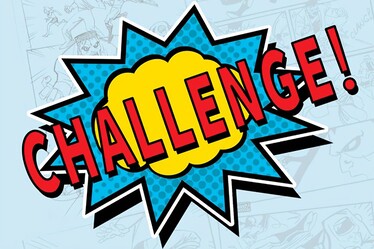 This week’s blog is something of a revisit to earlier blog posts. The reason we’re revisiting it is because it has been so influential in increasing our sales over recent months that we are certain that it can do the same for you. The 5 Day Author Ad Challenge is a free programme of videos and Facebook interactions that can help authors to increase their sales. Let’s deal with the elephant in the room first. You don’t need to spend money to benefit from this challenge.  To get the best out of the challenge it is necessary to spend some money on advertising, but if you don’t have any money to spare, then the challenge does include some ideas for things you can do for free, to make sure your books show up in Amazon’s search results. Saving up some money so you can take part in future challenges could, in our opinion, be the best investment you ever make in yourself and your writing. But the challenge isn’t just about Amazon searches. If you use other platforms, such a Draft2Digital, you can improve the chances of your book being found if anyone enters the right keywords into any search engine. People who don’t have a Kindle often search Amazon for ideas for new books, then go elsewhere to buy them. So, making it easier for people to find your books on Amazon can help regardless of where you publish them.  So, the first thing you have to do is sign up for the challenge, and I’ll provide a link for that at the end of the blog (don’t skip ahead! Oh, you already have). They are run every three months or so. They are provided by a guy called Bryan Cohen who runs a business called Best Page Forward, which provides training for authors on a range of book marketing skills. The challenge is a “loss leader”, designed to entice you into buying one or more of their training packages or other services. They also publish books related to book marketing and, if you can spare a few pounds (or Dollars, Yen, Euros, Bitcoin or whatever) we would suggest you buy them if you don’t want to do the challenge – or even if you do. We’ve posted links to our reviews of the books at the end of the blog too. The principle behind the challenge is that using Amazon Ads to sell books WILL always result in increased sales of your book, but by using the techniques and guidelines described during the challenge it will also make your ads more profitable. Profit is defined as royalties minus advertising costs, NOT sales income minus advertising costs. 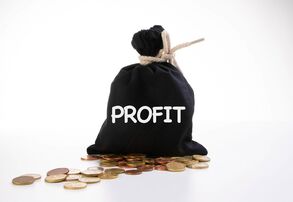 Here at Selfishgenie we are running a business and we aim to make a profit, so if we are able to make this pay then so can you. And we are making it pay. Now, to start with we aren’t talking about making telephone number sized incomes. If you spend £5 (or $, €, ¥ or whatever) it may return you £10. But if you then start to scale that up, £50 could make you £100, £500 could make you £1,000 and so on. So, you are able to start small to find out if it works for you. It will, so you can then start to invest some of your profits into more advertising and so scale it up over time. Bryan boasts of authors he has coached who are now on 6 digit earnings because of this challenge. We can’t verify that, but we can tell you that it has worked for us, and we are earning more profits from our ads than we ever have before, even if it isn’t a 6 digit profit. We have to be careful that we don’t infringe Bryan’s copyright in this blog, so we have to limit what we say to what is open access stuff that you can find on a number of websites. Because of that the best we can do is provide you with a taster. 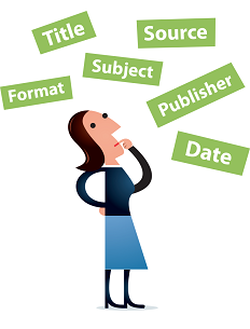 Bryan starts off by talking about the metadata for your book. This is the stuff that you enter on the very first tab of KDP when you self-publish your book. It includes the title, author name and more. Getting the metadata right is crucial to your book being found by search tools, whether it is using Amazon, Google or any other search engine. Getting the metadata right is the stuff that the challenge covers that is entirely free for you to implement. If you get nothing else from the challenge, you will have given yourself a better chance of your books being found. Next Bryan goes through using the different types of ad that are available on Amazon. Amazon Ads provide their own tutorial videos for that, but it is important to recognise that the aims of Amazon and the aims of the challenge are different. Amazon teaches you to use Amazon so that you can spend money on advertising and make THEM a profit. The aim of the challenge is to teach you to use Amazon Ads more efficiently so that YOU can make a profit. The Amazon tutorials teach you to do things in a way that is best for Amazon, not for you. However, the tutorials are good for helping you to find your way around the ads system and we would recommend watching them.  There are basically 4 types of ad, but only 3 of those are available outside of the USA. If you live outside the USA and want to advertise to American readers you can use that 4th type on Amazon.com. The easiest type of ad to use is the “automated ad”. This has simple settings and draws on the keywords in your metadata to identify readers to whom it will show your book (which is one of the reasons why metadata is so crucial). We have used this type of ad in the past and it does sell books, but it isn’t as targeted as the other two types of ad. That means that you have to get more ad clicks in order to sell books, which reduces profits, because you pay for each click. 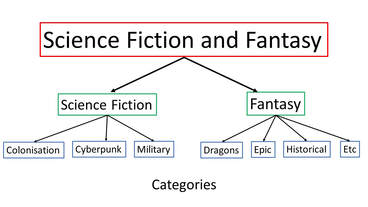 The second type of ad is the “category ad”. This is based on the categories you select when you set up your metadata on KDP. If you have selected “Romance>historical” then anyone who searches for that type of book will see your ad. They will also see that type of ad if they have ever bought that type of book. (We still see ads for Lego on our Amazon homepage because we once bought our grandson some Lego). Now, there are authors who like to call themselves “No 1 bestselling” and the way they do this without lying is to put their book into an obscure category that only requires one or two sales to get to the number 1 position in that category. For example, if an author puts their book in Kindle Store > Books > Home & Garden > Animal Care & Pets > Fish & Aquariums they can reach the number 1 spot with only 1 sale. KDP doesn’t read the book, so it will accept the entry even if the book is an historical romance. The author then gets their Mum to buy a copy and, hey presto, they are a No1 bestselling author. However, their vanity means that is the only book they will ever sell, because people who want to read historical romance will never see their book if they do a search for their favourite genre. The book will only be seen by people who are searching for books about keeping fish - and they are unlikely to buy it. So having your book in the right category is vital for sales and it is something that the challenge spends some time talking about. Vanity will be far better served by selling more books than by calling yourself a No 1 best-selling author.  The 3rd type of ad is the manually targeted keyword ad. This requires the author to generate between 100 and 150 keywords which might be used to search Amazon. By including those keywords in your ad your book will be seen by anyone who uses those words to do a search for their next book. A lot of those keywords are either the title of a book, its subtitle, the series title or the author’s name. That’s because if readers have enjoyed a book, they will use one of those things to find their next read. Some even enter the ASIN for the book they read, which is Amazon’s product identification number for it. Generating keywords is time consuming, so the challenge talks about using some public access (ie free) browser plug-ins and websites to help speed up the process. 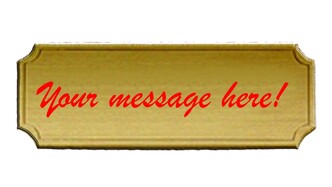 The final type of ad, which is only available for ads on Amazon.com, is the “custom ad”. This uses up to 150 characters of customised text as the “hook” to get people to click on the ad link. Again, the challenge talks about what makes a good hook, so you aren’t working totally blind. That type of ad can be used in conjunction with either categories or keywords to improve results. One of the things that the challenge points out is that if you set a budget, Amazon often doesn’t spend it all. So, if you set a daily budget of £5 ($5) which is the level recommended by the challenge, it doesn’t mean you will spend £5 x 30 = £150 a month. Our experience backs that up, because we only spend a fraction of the budget we set each month. But if your ads are profitable, the actual budget you set doesn’t matter anyway, because you will always come out on top. If you have never done this before, then saving up £150 so you can give it a try is very worthwhile. And you have time to do that before the January challenge. The next challenge is actually October, but you may not have had time to save up before then, but if you are someone who has a bit of spare cash, then we would recommend doing the challenge sooner rather than later. After all, why wait until January to find out how to sell more books?  There is a word of warning we must give, however: patience isn’t just a virtue, it is an essential. Results aren’t instantaneous. It can take 2 or 3 days just to get the first click on an ad, and it may need 10 or 20 clicks to make your first sale. But the system learns from those clicks and gets better at sending ads to the right people, so sales increase and the number of clicks needed to make a sale goes down. By “sale” we include KindleUnlimited downloads. A good result is 6-8 clicks per sale. We are getting a sale for every 4.8 clicks for one of our ads, which is excellent. As you can guess, we are very happy to recommend the challenge to you, our readers. Remember, it is free to undertake, and you don’t actually have to spend money on Amazon Ads if you don’t want to. But we think you will gain far more than you spend if you do. You can find out how to register for the next 5 Day Challenge by going onto the challenge's Facebook Page and following it. It is closed for posts and comments right now, but will re-open nearer the time. I would suggest checking it from about mid-September onwards. For our review of “Self Publishing With Amazon Ads” click here. (you will need to scroll down to find it) For our review of “Fiction Blurbs, The Best Page Forward Way” click here (again, you will need to scroll down). If you have enjoyed this blog, or found it informative, then make sure you don’t miss future editions. Just click on the button below to sign up for our newsletter. We’ll even send you a free ebook for doing so.  Bryan Cohen of "Selling For Authors". Bryan Cohen of "Selling For Authors". I watched a very interesting webinar recently, about using keywords to improve sales on Amazon (and other retailing websites). I can’t provide a link to it, because it expired on 2nd July, but it was created by Bryan Cohen, owner of the Selling For Authors website. Bryan provides training for authors who need help marketing their books and he has also published a number of books on the subject, some of which have been reviewed on this blog page. We’re big fans of Bryan because he has helped us to increase our sales. So, with the webinar no longer being available, we thought we would tell you about some of the things we learnt from it.  Basically, the webinar was about “Search Engine Optimisation”, aka SEO. But rather than being about using SEO techniques to help people find your website (you may not even have one), it is about helping readers to find your books on whichever websites you sell them. Although I will be talking almost exclusively about KDP and Amazon, the same techniques can be used for whichever websites you use to publish and sell your books. The secret is keywords. Those are the seven words you are able to input into the metadata for your book when you upload it onto KDP. 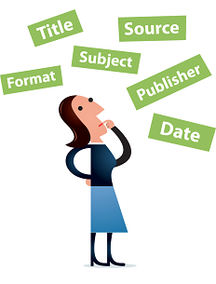 Metadata, if you are unfamiliar with the term, is the stuff you enter in the first part of the KDP process: Book title, author name, blurb, etc. That is all copied across to other versions of the book, such as paperbacks and some of it also appears on the Amazon sales page. But from the point of view of this blog, I’ll be talking about keywords and subtitles which are a very important part of the metadata.. Now, I’ve already said KDP allows you to enter 7 key words for your book. That is misleading, because you can actually enter whole phrases. If you enter 7 phrases of five words each, that’s 35 words you actually use. The critical thing is, the closer you can match those phrases to the ones people use when they search for books on-line, the higher your book will appear in the search results.  If you use a generic term in your keywords, such as Sci-fi, then it generates thousands of results, and your book will be hidden away in amongst all the others. But if you get an exact match on a longer phrase, the only books that will appear higher in the results are those which have been “sponsored” (paid for adverts) and other books with keywords that are an exact match for the same search term. A book that hasn’t sold a copy since Adam was a lad can appear on the first page of the search results if the right keywords have been used. And experience shows that a book that appears on the first page of search results has a far higher chance of being purchased than one that appears on the subsequent pages. Bryan advises us that there is a process for finding the right keyword phrases to use. Trying to short-cut that process is likely to give disappointing results, so you are advised to set some time aside for this activity. 2 to 3 hours should be enough for a single book.  If you can’t spare 3 hours out of your busy schedule to sell your books, then you will never sell any books. The first thing to do is to think what your book is actually about in the simplest terms. This is not about writing a synopsis or even a back cover blurb. This is about finding a few words that describe it in the most basic form. So, let’s say your book's genre is sci-fi.
Having decided what sort of book you have written, you now need to brainstorm some phrases that might be put into a search bar by someone who is looking for books like yours, eg Sci-fi set in space but including time travel. Why do you need more than one phrase? Because this isn’t an exact science. We don’t yet know which words are going to provide the best results, so we are indulging in trial and error. This is why you need to set time aside to do this.  The next step is to try the phrases out in Amazon’s search bar to see what sort of results they generate. Use “incognito browsing” for this, so Amazon doesn’t show you your own books, because you are looking to see what results are produced for successful books (I’ll define successful a bit better in a moment). Having entered your first phrase, take a look at the results. Ignore the ones that have been sponsored and also ignore any books that are being offered for free, because you don’t know if they are popular because readers like them or because the readers just want a free book. Click on the book that is highest in the results (after excluding sponsored and free) and read the blurb. Is it like yours in basic terms? If no, then the phrase you have used isn’t producing the correct results and you can discard it. If yes, you can now scroll down to the book’s details and look at the sales rankings. This is where you consider if the book is successful or not.  If the book’s overall sales ranking is better than 50,000 it is probably selling reasonably well. But also look at its rankings within its categories. If they are looking pretty good (better than 5,000), then that confirms your initial feelings. But are they the same categories that you have selected for your book? Because that is an important factor too. If they aren’t you can change your categories in KDP later, because if their book is selling well in those categories, yours have a good chance too if they are similar. Don’t bother with books that have a sales ranking worse than 500,000. They aren’t selling enough copies, which means that the keywords you used aren’t going to sell you many books because the results aren’t producing what the readers are looking for. Also don’t try to compete with the books that are at the top of the rankings. They are probably being written by well-known authors, which means you stand little chance of your book being selected as the one to buy. You are looking for the “mid-range” results that will sell you around 10 copies a day. If you get momentum from that you will climb the sales rankings naturally and you may end up competing with the bestselling authors that way, which is a happy place to be.  Repeat this process until you have 2 or 3 phrases that are producing the sorts of search results you were hoping for. Now go to KDP and enter those phrases into the keyword boxes, replacing any keywords that you feel probably aren’t working for you. If you use “Publisher Rocket” (we do) these will be easier to identify. Finally, the hardest part of all – be patient. If you have chosen the right keywords, sales will come, and they will be better than the sales you have had before. If you don’t have the success you expected after about a month, then repeat the process, generating new phrases to try. Don’t try to change all 7 keywords in one go. You won’t know which ones are working and which aren’t, and you may delete keywords that were selling you a few books before you tried this. If your sales are worse than they were before you started then not only are your new phrases not working for you, but you may have deleted useful keywords and you need to reinstate them.  Now, before we go on to talk about subtitles, just a word about the section of the metadata that asks you if the book contains “adult” content. Amazon isn’t too clear on what adult content is and what it isn’t. Accordingly, Bryan Cohen advises that you click on “no” for that question. If you write books that are erotic, contain a lot of extreme violence or lots of strong swear words, then maybe you should click the “yes” option. But otherwise, your books may end up in the adults only dungeon (Bryan’s words) and not be seen by a lot of potential readers. Ask yourself this: “Would I be happy with my 14 year old child reading this book?” If the answer is yes, then no harm will come from clicking the “no” button as children below that age tend not to buy books, their parents do the buying so let them make the decision. Now, subtitles.  We hadn’t thought about these too much in the past and hardly ever use them, but it turns out we should have. Using a subtitle allows you to have an 8th keyword phrase in your metadata that Amazon can find when people do searches. Naturally, as the subtitle appears on the book’s sales page it needs to be grammatically correct, but it can be used to provide guidance to the reader about the book’s content, which may not be apparent from the title. For example, one of our sci-fi titles is called “The Magi”. For some readers that could be interpreted (despite the cover showing an image of a spaceship) as being a book about the Three Wise Men who visited Jesus in Bethlehem. But by adding a subtitle that says “A sci-fi action adventure” we are describing the book in a way that can’t be misinterpreted. Subtitles like that can be used for any book written in any genre. Again, using trial and error, generate some potential subtitles and put them into Amazon’s search bar and see what results they produce. If they give you a list of books that use the same or similar subtitle, which the blurb tells you are the same sort of books that you write and which have reasonable sales rankings, then you are onto a winner. If your books have been organised into a series on KDP, as they should be if they are a series, then don’t use the series title in your subtitle. That will appear in search results if a reader uses the series title as a search term. The series title appears on the sales page anyway so you will be duplicating the wording and that looks amateurish. You don’t have to include your subtitle on your book cover. If you use KDP’s cover creator, it will pull the subtitle through from the metadata if there has been no previous cover created, but you can delete it from the cover if you want to. If you designed your own cover, you don’t have to change it to include the subtitle. Just a note about paperbacks (and hardbacks). Once these have been published you can’t go back later and add a subtitle. However, if a search throws up your ebook, then the other buying options will also be shown on the sales page so readers will see that there is a hard copy option if they want it.  I have tried to cram into less than 10 minutes of reading what Bryan took an hour to say in his webinar, but of course he went into a lot more detail. So, if you want to know more, I suggest you contact Bryan through his website. As well as selling training he also runs regular “author challenges” where he provides coaching for free, so you may care to sign up for one of those in order to expand on what we have discussed here. If you have enjoyed this blog, or found it informative, then make sure you don’t miss future editions. Just click on the button below to sign up for our newsletter. We’ll even send you a free ebook for doing so. |
AuthorThis blog is compiled and curated by the Selfishgenie publishing team. Archives
March 2025
|
||||||
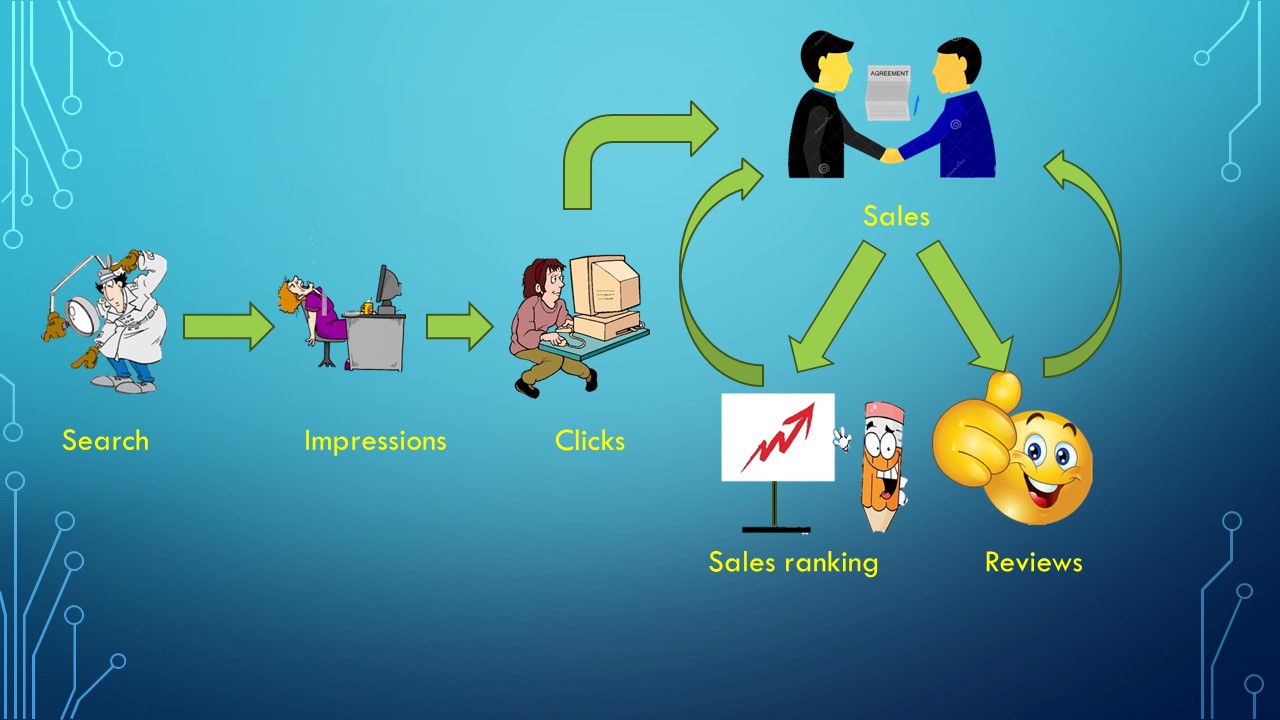
 RSS Feed
RSS Feed